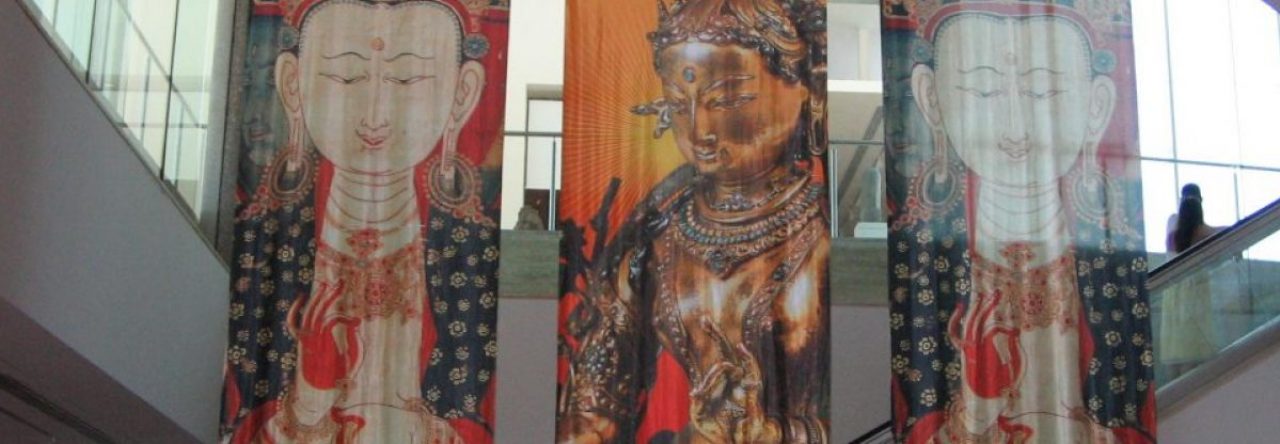When I think over the fifty-six years since I left high school, I can say confidently that I can think of no single thing which has contributed to my healthy development (in terms of growing up and waking up) more than wisely-directed attention. Conversely, if I think of the suffering which I have brought upon myself and others at one juncture or another in that time, inevitably the most influential factor in my harmful behaviour was unskilful attention. If you ask what characterizes unskilful attention, I would say that in general I have hurt myself and others when selfishness has guided attention.
This may sound harsh, especially because when I left high school I was young – inexperienced, naive, and (in my case) very lost. That’s so. And yet, looking at the situation with an honest gaze, it was exactly that lack of self-knowledge that played a part in directing my attention unskilfully. I had much to learn, and the learning which has occurred was precisely due to the ‘right’ use of attention.
What characterizes ‘right attention’? Development became possible when attention was directed to knowing myself as a concrete life. The etymology of ‘concrete’ is helpful here. The word descends from a Latin root which means: to grow together. In the present context, what are the processes which are connected, or ‘grow together’?
I find this tricky to talk about, because the two processes I will start with aren’t ‘connected’ in the sense of there being ‘two processes’ at all. We talk that way, and it helps; but it’s not the most accurate way to conceive of our situation. That is, in a very real way the human individual is a growth movement with and of their matrix – which is the natural world. An individual is a separate process in some important respects, but not in all respects. World and organism are one interaction and move forward together. Your lived world and the big world of nature are indissolubly united in growing together. In his A Process Model Gendlin says that while the body and environment are in some respects different, “The body is a nonrepresentational concretion of (with) its environment.” That is, in its fundamental actuality it is one body-environment process.
So, let me suggest that the world of personal experience is both ‘within’ and of the bigger world. This has been recognised for a long time. What the European phenomenologists called ‘the lived world’ the Buddha called ‘a world within a world.’ The important thing to note here is that one’s lived world and the bigger life process have always grown together.
Humans have not only evolved ‘up from Eden,’ as has been said – but, we have evolved with Eden. And the human process we call attention is still in the process of developing with vast nature as its matrix. When, at last, skilful attention led me to this realisation, and when I could confidently conceive of my body as of the world, then healthy development became organic.
But where do we now find ourselves, at this point within the evolution of the wider world? Poised for extinction, or for a further development? At our present level of development, we can think of our attention as functioning on two different levels. One level is shaped by three major urges such as: the need to possess people and things (a going toward); the desire to be aggressive (a going against); and a limited ability to learn from the matrix of primordial experiencing (a going away).
The other level involves disconnecting from the concrete in an even stronger way than simply a limit on learning. Via our capacity for symbol-making we effect a dissociation from bodily life. This second level creates the kinds of thinking and recreation of the world which are out of kilter with the way things are. This happens when preferences, thoughts, self-representations, and societal conditioning come into play. The matrix itself, of course, doesn’t prohibit this, but it is obvious that this level’s malfunctioning is not in favour of our continued life on planet earth.
The arising of symbolizing in the species was not itself a problem. For a time this level carried human life forward. However, it is how we are using it at this stage in our development which has brought our present dangerous predicament.
We will explore how this has happened, and the way forward. A large part of my project here is directed toward understanding what healthy attention is, and how it can develop from this ‘default mode.’ It might help us survive if we can develop attention in such a way that it can fulfil its true function as the world’s attention. It seems to me that this is an invitation that the bigger world offers.
